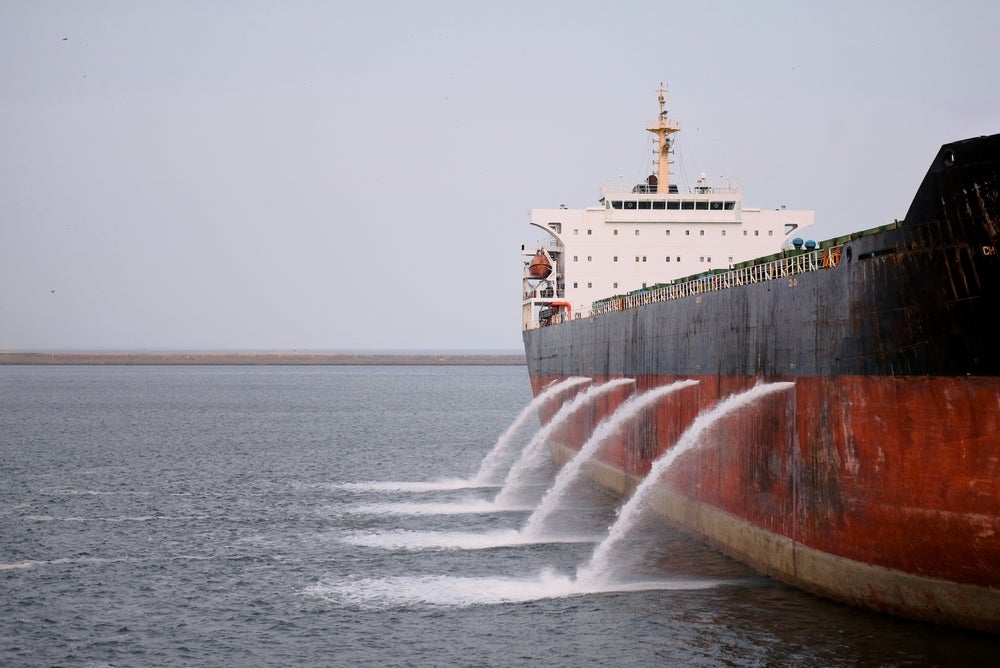When development began on the Ballast Water Management Convention (BWM Convention) in 2004, invasive aquatic species transported in ships’ ballast water tanks were considered as significant an environmental challenge as greenhouse gas (GHG) emissions. These invasive species, such as the European green crab arriving in Canada, continue to threaten marine ecosystems and biodiversity worldwide.
While the BWM Convention has faced challenges over the years – and has understandably taken a supporting role to the International Maritime Organization’s (IMO) GHG regulations – it is becoming increasingly refined and enforceable. Fortunately, digital technology can help ensure regulatory requirements are met without making compliance an administrative burden.

Not all shipowners, seafarers, and shoreside staff may be fully aware of the latest updates to the BWM Convention, which took effect on 1 February 2025, following discussions at the 82nd session of the IMO’s Marine Environment Protection Committee (MEPC 82).
These updates introduce mandatory changes to ballast water record-keeping, new guidance for operations in challenging water quality (CWQ) conditions, and stricter requirements for documenting ballast water management system (BWMS) maintenance. The updates are particularly significant for internationally operating vessels over 400 gross tonnes.
Updates to record-keeping standards
As of 1 February 2025, Ballast Water Management Record Books (BWRBs) may still be maintained either electronically or in paper format. However, they must now follow a revised structure with enhanced and more detailed data fields. Additionally, stricter deadlines for submitting reports have been introduced to improve record-keeping accuracy.
These updates are a welcome improvement, as inadequate documentation has become a key compliance issue under the BWM Convention. While the new requirements mandate recording more data, digital technology and clear guidance can help shipowners and crews manage these changes efficiently.
MEPC 82 has also approved revised guidance for ballast water record-keeping in CWQ situations. Many ports worldwide present water quality challenges, such as the sediment-heavy waters of the Port of Shanghai, which can obstruct BWMS operations and disrupt normal ballast treatment procedures.
To address these challenges, two new operational scenarios have been introduced – called scenarios three and four. Scenario three accounts for a reactive BWMS bypass triggered by unexpected water quality issues, while scenario four allows for a pre-emptive bypass when difficult conditions are anticipated. In both cases, proper logging of these actions is required.
Ensuring long-term records of BWMS operations remains a priority for shipowners and crew. According to the BWM Convention, “Ballast Water Record Book entries shall be maintained on board the ship for a minimum period of two years after the last entry has been made and thereafter in the company’s control for a minimum period of three years.”
Documenting BWMS maintenance
Additionally, MEPC 82 has strengthened BWMS maintenance documentation requirements. Maintenance activities must now be recorded in the BWRB in line with the ship’s Ballast Water Management Plan (BWMP) and Original Equipment Manufacturer (OEM) guidelines. The responsible crew members must also sign these records, ensuring accountability and compliance.
This update prevents redundancy in ship maintenance procedures while ensuring all critical maintenance is properly documented. Maintaining accurate records enhances safety, operational reliability, and regulatory compliance. Since recording maintenance in logbooks is already standard for other onboard systems, applying the same practice to BWMS is a logical progression.
Digital logbook technologies can assist shipowners and seafarers in smoothly implementing these BWM Convention updates. By reducing the need for manual data entry, these systems simplify compliance, improve data accuracy, and allow seafarers to focus on other essential operational and safety responsibilities.
As ballast water regulations continue to evolve, staying ahead of regulatory requirements is crucial for shipowners and crew. The latest updates to the BWM Convention introduce stricter documentation and record-keeping standards, reinforcing the need for accurate, transparent, and efficient reporting in logbooks.
While these changes add new administrative responsibilities, digital technology offers a practical and efficient compliance solution. Ultimately, embracing these advancements will be key to protecting marine ecosystems worldwide.




